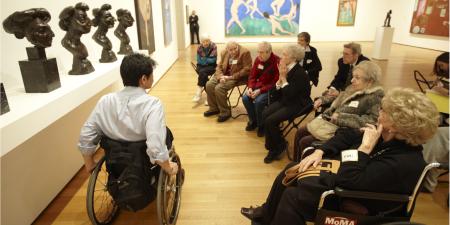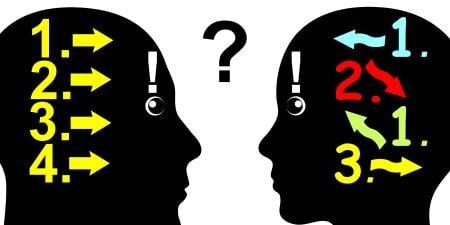Abstract
As participation in youth sports has risen over the past two decades, so has the incidence of youth sports injuries. A common topic of concern is concussion, or mild traumatic brain injury, in young athletes and whether concussions sustained at a young age could lead to lifelong impairment such as chronic traumatic encephalopathy (CTE). While the pathway from a concussed young athlete to an adult with CTE remains unknown, current research is attempting to provide more clarity. This article discusses how health care professionals can help foster an informed, balanced decision-making process regarding participation in contact sports that involves the parents as well as the children.
Introduction
There are certainly many benefits to participation in youth sports, including improved fitness level, increased self-esteem, and enhanced peer relationships [1, 2]. In recent years, though, there has been increasing concern regarding the safety of contact and collision sports. Much of this concern is owing to the growing body of research and heightened media attention on concussions and potential long-term effects, including the development of chronic traumatic encephalopathy (CTE) later in life. CTE is a progressive neurodegenerative condition associated with neuropsychiatric symptoms, behavioral changes, and cognitive deficits, which, in the classic form reported in boxers, develops one to two decades after retirement, while in the modern form reported in a broader cohort of contact sport athletes, may develop even earlier [3]. Currently, there are no established clinical criteria for the diagnosis of CTE. In this article, we will briefly discuss what is known and unknown about CTE in relation to mild traumatic brain injury and repetitive head trauma and how to ethically address this risk with young athletes and their families when discussing participation in contact sports.
Research on CTE and Related Neurodegenerative Conditions
Currently available research regarding CTE is not definitive. While CTE is associated with tauopathy, the existence of CTE as a distinct neuropathologic condition is not universally accepted [4], as other neurodegenerative conditions are associated with the presence of abnormal tau proteins [5], and abnormal tau protein deposition has been reported to be part of the normal aging process in the absence of head trauma [5, 6]. As of 2013, there were 158 cases of CTE reported in the published literature [4]. While the authors of these studies propose that both concussive head injury and repetitive subconcussive impacts lead to neuropathologic changes and the subsequent development of neuropsychiatric symptoms, behavioral changes, and cognitive deficits of CTE [4, 7], the sample sizes of these studies are very small and contain an element of selection bias. Additionally, confounding factors such as substance abuse and genetic predisposition to neurodegenerative disease and mental illness were not controlled for. While studies suggest there might be an increased risk of CTE and other neurodegenerative diseases in professional athletes [7, 8], there is little information available regarding the risk to amateur athletes [9]. A cohort study of 438 former high school football players from Minnesota revealed no difference in risk of neurodegenerative disease compared to a control group of 140 classmates who did not play football [10]. Our PubMed search identified no published epidemiological, cross-sectional, longitudinal, or prospective studies related to CTE, making it impossible to determine true incidence and causation.
Neuroimaging
In addition to studies on CTE, multiple studies have demonstrated brain changes on neuroimaging following concussion [11-16], but the long-term implication of these changes is currently unknown. Recently, there has been increased attention to the potential effects of repeated subconcussive head trauma on the brain. While this is most often discussed in relation to football, other contact sports, such as wrestling and soccer, also involve some degree of this type of head impact. A recent study of 25 youth football players found an association between cumulative head impact exposure and microstructural changes in certain white matter tracts over a single season in the absence of concussion [17]. Similarly, a longitudinal study of collegiate football players found white matter changes on diffusion-tensor MRI following one season of play in the absence of concussion; however, these athletes underwent repeat imaging after six months of rest from contact activity, and the white matter changes had returned to baseline [18]. At this time, there is not enough evidence to correlate changes in white matter to the subsequent development of neurodegenerative disease or functional deficits, especially in young athletes.
Management of Concussion
The diagnosis of concussion is made clinically. Ideally, an athlete suspected of having a concussion is evaluated by a health care professional who is trained and experienced in the diagnosis and management of concussion. Initial management includes cognitive and physical rest [9, 19, 20]. While the athlete remains symptomatic, he or she will often require academic accommodations, such as a modified or reduced schedule, a reduced work load, extensions on assignments, extra time for testing, and additional accommodations to reduce visual and auditory stimuli [21]. Physical rest is also advised, with no return to high-risk or contact activity until the athlete is asymptomatic. Some athletes require medication for symptom management, such as nonsteroidal anti-inflammatory drugs (NSAIDs) for headaches or antiemetics for nausea, while others can benefit from cognitive behavioral therapy (CBT) for mood disturbance or emotional issues related to their concussion [9, 19, 20]. Treatment of concussion should be individualized, as symptoms can vary widely and preexisting conditions, such as mood disorders, depression, anxiety, attention-deficit hyperactivity disorder (ADHD), learning disorders, and migraines can complicate management and recovery [19, 20, 22]. Prior to full return to sports activity, it is recommended that the athlete complete a return to play progression, which involves a gradual increase in level of physical exertion prior to returning to any contact activities [23].
Counseling Families and Young Athletes
With all that is unknown regarding concussion and repeated head trauma and the risk of long-term effects, it can be difficult to counsel families seeking guidance related to their child’s participation in contact sports. Given the complexity of the discussion and the gravity of the conditions being discussed, an ethical question is raised as to whether or not the child should be involved in this discussion. There is an increasing amount of literature supporting children’s involvement in their health care, and inclusion of pediatric patients in decisions affecting their health is supported by the American Academy of Pediatrics [24]. Encouraging young patients to participate in the decision-making process might promote empowerment and improve compliance with medical recommendations [24] and might in addition increase understanding and awareness.
Although minors’ involvement in shared decision making remains relatively underresearched, the available data indicate that children prefer to be included and feel it is important to be involved in decisions related to their health care [25, 26]. It has been demonstrated that children as young as nine years old, despite not having the same level of competency as adults, are similarly able to make logical decisions regarding their health [27]. Most adolescents possess a level of cognitive development that allows abstract thinking and the ability to handle complex tasks, making them more capable of informed decision making [28, 29]. Concurrently, adolescence is the time when reward-seeking regions of the brain are developing, which can influence young peoples’ choices and lead to risky behavior [30]. This is why the involvement of family and medical professionals remains crucial to decision-making processes regarding the care of children and adolescents, who often value input from their family and treating clinician [31, 32].
Shared decision making regarding sports participation. Health care professionals routinely counsel young patients and their parents about the consequences of activities that could impact long-term health, such as drug and alcohol use, sex, diet, and exercise. Similar to inclusion of pediatric patients in discussions of how smoking can lead to cancer or how obesity can lead to hypertension and heart disease, we recommend that young people be included in the discussion of concussion and repetitive head trauma and the unknown risk of CTE. This discussion often requires a longer clinic visit. The physician should review the patient’s concussion history and risk factors for prolonged recovery with the family. There is evidence to suggest that prior history of concussion, younger age, history of headaches, and history of learning disability might be risk factors for prolonged recovery [9, 19, 20, 22]. Discussion of risk should be age appropriate and individualized, taking into account the child’s level of cognitive and emotional development [24]. It is important to be honest about the fact that, despite the available research on concussion and CTE, much remains unknown, including causation, incidence, and risk. Some young athletes and families are more willing to accept this unknown risk than others.
Revisiting the decision. Additionally, it is important to recognize that a young athlete’s perspective regarding participation in contact sports can change over time. This can be especially true after he or she sustains a concussion and experiences the effects of concussion symptoms and recovery, including academic and social difficulties. For those who experience prolonged recovery from mild traumatic brain injury or are unfortunate enough to have multiple concussions, the risks of continuing to participate in contact sports activity might outweigh the benefits from a medical perspective as well as from the athlete’s and family’s perspectives. Young athletes might have similar feelings when it comes to other injuries, such as anterior cruciate ligament (ACL) tears, that are associated with potentially difficult and prolonged recovery processes.
Retirement from sports. There is no evidence-based guideline regarding retirement of a young athlete who has fully recovered from previous concussions. Consideration should be placed on how concussions impact academics, social life, emotional well-being, and normal daily functioning. It is important to discuss the types of sports the child participates in and which sports put him or her at higher risk for sustaining a concussion. At the high school level, football, ice hockey, and lacrosse are among the highest-risk sports for boys, while soccer, lacrosse, and basketball are the highest-risk sports for girls [33]. The decision to remove a young athlete from high-risk activities for a period of time or to retire him or her from contact or collision sports is individualized and should be made collaboratively by a physician experienced in concussion management, the athlete, and the family. In our sports concussion program at Children’s Hospital of Wisconsin, we have found that some children and families welcome these discussions and were already thinking about retirement from contact sports but were waiting for the physician to open the discussion. Having these open discussions can also be beneficial in cases in which the athlete and the family, or different family members, might be misinformed about concussion or have differing opinions regarding continued participation in contact sports. Ultimately, the goal is to work together to make the best decision possible for the young athlete based on the available medical information as well as the desires and concerns of the athlete and the family.
References
- Findlay LC, Coplan RJ. Come out and play: shyness in childhood and the benefits of organized sports participation. Can J Behav Sci. 2008;40(3):153-161.
- Telford RM, Telford RD, Cochrane T, Cunningham RB, Olive LS, Davey R. The influence of sport club participation on physical activity, fitness and body fat during childhood and adolescence: the LOOK longitudinal study. J Sci Med Sport. 2016;19(5):400-406.
-
What is the evidence for chronic concussion-related changes in retired athletes: behavioural, pathological and clinical outcomes?
- Gardner A, Iverson GL, McCrory P. Chronic traumatic encephalopathy in sport: a systematic review. Br J Sports Med. 2014;48(2):84-90.
-
Karantzoulis S, Randolph C. Modern chronic traumatic encephalopathy in retired athletes: what is the evidence? Neuropsychol Rev. 2013;23(4):350-360.
- White L. Brain lesions at autopsy in older Japanese-American men as related to cognitive impairment and dementia in the final years of life: a summary report from the Honolulu-Asia aging study. J Alzheimers Dis. 2009;18(3):713-725.
- McKee AC, Cantu RC, Nowinski CJ, et al. Chronic traumatic encephalopathy in athletes: progressive tauopathy after repetitive head injury. J Neuropathol Exp Neurol. 2009;68(7):709-735.
- Omalu B, Bailes J, Hamilton RL, et al. Emerging histomorphologic phenotypes of chronic traumatic encephalopathy in American athletes. Neurosurgery. 2011;69(1):173-183.
- Giza CC, Kutcher JS, Ashwal S, et al. Summary of evidence-based guideline update: evaluation and management of concussion in sports: report of the Guideline Development Subcommittee of the American Academy of Neurology. Neurology. 2013;80(24):2250-2257.
- Savica R, Parisi JE, Wold LE, Josephs KA, Ahlskog JE. High school football and risk of neurodegeneration: a community-based study. Mayo Clin Proc. 2012;87(4):335-340.
- Mayer AR, Ling J, Mannell MV, et al. A prospective diffusion tensor imaging study in mild traumatic brain injury. Neurology. 2010;74(8):643-650.
- Niogi SN, Mukherjee P, Ghajar J, et al. Extent of microstructural white matter injury in postconcussive syndrome correlates with impaired cognitive reaction time: a 3T diffusion tensor imaging study of mild traumatic brain injury. AJNR Am J Neuroradiol. 2008;29(5):967-973.
- Wilde EA, McCauley SR, Hunter JV, et al. Diffusion tensor imaging of acute mild traumatic brain injury in adolescents. Neurology. 2008;70(12):948-955.
- Borich M, Makan N, Boyd L, Virji-Babul N. Combining whole-brain voxel-wise analysis with in vivo tractography of diffusion behavior after sports-related concussion in adolescents: a preliminary report. J Neurotrauma. 2013;30(14):1243-1249.
- Dimou S, Lagopoulos J. Toward objective markers of concussion in sport: a review of white matter and neurometabolic changes in the brain after sports-related concussion. J Neurotrauma. 2014;31(5):413-424.
- Virji-Babul N, Borich MR, Makan N, et al. Diffusion tensor imaging of sports-related concussion in adolescents. Pediatr Neurol. 2013;48(1):24-29.
- Bahrami N, Sharma D, Rosenthal S, et al. Subconcussive head impact exposure and white matter tract changes over a single season of youth football. Radiology. 2016;281(3):919-926.
-
Mayinger MC, Merchant-Borna K, Hufschmidt J, et al. White matter alterations in college football players: a longitudinal diffusion tensor imaging study [published online ahead of print January 14, 2017]. Brain Imaging Behav. doi:10.1007/s11682-017-9672-4.
- McCrory P, Meeuwisse WH, Aubry M, et al. Consensus statement on concussion in sport: the 4th International Conference on Concussion in Sport held in Zurich. November 2012. Br J Sports Med. 2013;47(5):250-258.
- Harmon KG, Drezner JA, Gammons M, et al. American Medical Society for Sports Medicine position statement: concussion in sport. Br J Sports Med. 2013;47(1):15-26.
- Halstead ME, McAvoy K, Devore CD, et al. Returning to learning following a concussion. Pediatrics. 2013;132(5):948-957.
- Abrahams S, Fie SM, Patricios J, Posthumus M, September AV. Risk factors for sports concussion: an evidence-based systematic review. Br J Sports Med. 2014;48(2):91-97.
- Halstead ME, Walter KD. Council on Sports Medicine and Fitness. Sport-related concussion in children and adolescents. Pediatrics. 2010;126(3):597-615.
-
Committee on Bioethics. Informed consent in decision-making in pediatric practice. Pediatrics. 2016;138(2):e20161484. http://pediatrics.aappublications.org/content/138/2/e20161484.long. Accessed February 6, 2017.
- Stegenga K, Ward-Smith P. The adolescent perspective on participation in treatment decision making: a pilot study. J Pediatr Oncol Nurs. 2008;25(2):112-117.
- Zwaanswijk M, Tates K, van Dulmen S, et al. Communicating with child patients in pediatric oncology consultations: a vignette study on child patients’, parents’, and survivors’ communication preferences. Psychooncology. 2011;20(3):269-277.
- Weithorn LA, Campbell SB. The competency of children and adolescents to make informed treatment decisions. Child Dev. 1982;53(6):1589-1598.
- Grisso T, Vierling L. Minors’ consent to treatment: a developmental perspective. Prof Psychol. 1978;9(3):412-427.
- McCabe MA. Involving children and adolescents in medical decision making: developmental and clinical considerations. J Pediatr Psychol. 1996;21(4):505-516.
- Steinberg L. A dual systems model of adolescent risk-taking. Dev Psychobiol. 2010;52(3):216-224.
- Coyne I. Consultation with children in hospital: children, parents’ and nurses’ perspectives. J Clin Nurs. 2006;15(1):61-71.
-
Zwaanswijk M, Tates K, van Dulmen S, Hoogerbrugge PM, Kamps WA, Bensing JM. Young patients’, parents’, and survivors’ communication preferences in paediatric oncology: results of online focus groups. BMC Pediatr. 2007;7:35. https://bmcpediatr.biomedcentral.com/articles/10.1186/1471-2431-7-35. Accessed February 6, 2017.
- Marar M, McIlvain NM, Fields SK, Comstock RD. Epidemiology of concussions among United States high school athletes in 20 sports. Am J Sports Med. 2012;40(4):747-755.



